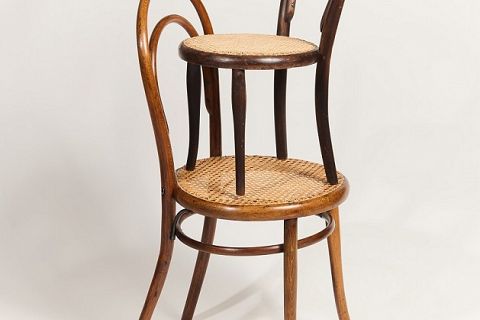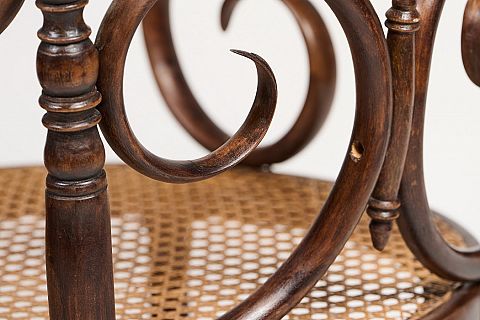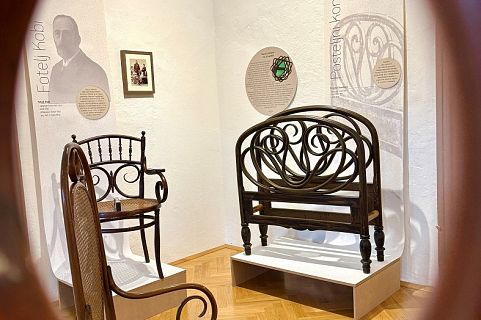The Charm and Beauty of Bentwood from Thonet to Today
At the heart of the story of bentwood stands the visionary Michael Thonet, who in the mid-19th century saw in wood far more than a simple raw material. His life’s journey is a story of courage, innovation, and the ability to unite craftsmanship, technical ingenuity, and industrial logic into aesthetic perfection.
With his invention of bending solid wood using steam and metal moulds, Thonet introduced to the world in 1856 a technique that, in its essence, has remained unchanged to this day. From it emerged magnificent creations – chairs, tables, benches, folding screens, towel racks, and children’s furniture.
His furniture was elegant, lightweight, easy to transport, and affordable. For the first time, beauty, functionality, and serial production were combined. Among all his creations, the legendary Chair No. 14 stands out as a symbol of timeless design. Its graceful simplicity conquered cafés, homes, and public spaces around the world and secured Thonet’s place among the pioneers of modern design.
Thonet’s first factories arose in Moravia, rich in beech wood – the essential raw material for bentwood furniture. After the expiry of his patent in 1869, factories and workshops began to appear elsewhere, including in Slovenia, particularly in the region of Styria. In towns such as Poljčane, Oplotnica, Zbelovo, and many smaller places, craftsmen followed Thonet’s tradition, creating high-quality bentwood furniture that adorned homes and public interiors. The factory of bent furniture in Duplica near Kamnik operated the longest — from 1907 until the 1990s.
After the First World War, the industry began to decline, especially during the economic crisis of the 1930s. Nevertheless, Slovenian factories – though never part of the international Thonet-Mundus concern – left a significant mark on industrial and cultural history.
The exhibition The Charm and Beauty of Bentwood – From Thonet to Today, held at the Intermunicipal Museum Kamnik, tells not only the story of one man but also reveals the rich heritage of bentwood furniture factories across the former Austro-Hungarian Empire. Special attention is given to the factory in Duplica near Kamnik, which played an important role in the development of the local furniture industry.
On display are some of the most fascinating and valuable pieces from the museum’s collection of Thonet furniture, comprising over one hundred objects by various makers, as well as from the private collection of Ilona and Jurij Rihar, who preserve the rare art of restoration and hand-woven rattan seating with remarkable skill and dedication. Each piece tells its own story – about the craftsman who made it, the family who used it, and the time in which it was created.
The joint presentation of both collections is a tribute to creativity, collaboration, and respect for the past. Bentwood furniture is not merely a technical achievement – it is a symbol of connection between people, places, and generations. Thonet’s designs remain a living heritage of craftsmanship, simplicity, and elegance – a beauty that continues to inspire us today.







